Papers by Engelbert Stockhammer
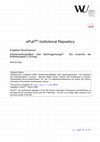
Der Fordismus, das Akkumulationsregime der Nachkriegszeit, das auf einem impliziten Kompromiss zw... more Der Fordismus, das Akkumulationsregime der Nachkriegszeit, das auf einem impliziten Kompromiss zwischen Kapital und Arbeit basierte, war durch einen regulierten Finanzsektor und durch niedrige reale Zinsen gekennzeichnet war, kam in den 70er Jahren in die Krise. Mit der Neo-Konservativen Revolution der frühen achtziger Jahre verschoben sich die Kapital-Arbeits-Beziehungen zugunsten des Kapitals, ausgedrückt in einer steigenden Profitquote. Der Wohlfahrtsstaat wurde zurückgebaut und der finanzielle Sektor dereguliert und realen Zinssätze stiegen. Gleichzeitig fielen Wachstumsraten und Akkumulationsrate, und Arbeitslosigkeit erhöhte sich auf Niveaus, die in der Nachkriegsgeschichte beispiellos waren. Die Keynesianische Erklärung, die in diesem Artikel vorgeschlagen wird sieht im Rückgang der Kapitalbildung die Hauptursache für den Anstieg der Arbeitslosigkeit. Der Grund für Verlangsamung in der Akkumulation ist in den Änderungen im Finanzsektor suchen. Nicht nur haben Realzinssätze di...
Globalization and the effects of changes in functional income distribution on aggregate demand in... more Globalization and the effects of changes in functional income distribution on aggregate demand in Germany Working Paper

Review of Evolutionary Political Economy, 2020
This is the first of two inaugural issues of the Review of Evolutionary Political Economy (REPE),... more This is the first of two inaugural issues of the Review of Evolutionary Political Economy (REPE), a new peer-reviewed, inter-disciplinary academic journal, initiated by the European Association for Evolutionary Political Economy (EAEPE) and published by one of the leading international academic publishers, Springer Nature. But why a new journal? Is there a potential space for it in the universe of already well-established economic journals? And what could its value-added for the economics community be? The ambition of the journal is to bring together and integrate political economy, evolutionary and institutional economics, agent-based computational economics, and heterodox macroeconomics, and to become a pluralistic forum of excellence in what is emerging as evolutionary political economy. Economics got separated from the social sciences in the late nineteenth century, when its later mainstream turned from "political economy" to "pure economics", which in turn, led to "neoclassical economics". A substantial further narrowing of that mainstream took place from the 1970s onwards. With the "New Classical" counterrevolution, the Keynesian-neoclassical truce of the postwar period was ended. This transformed, in particular, the field of macroeconomics. A new mainstream economics was established, based on methodological individualism, particularly "rational

Wage-Led Growth
In the last quarter century dramatic changes in income distribution have taken place. This refers... more In the last quarter century dramatic changes in income distribution have taken place. This refers to the personal distribution of income as well as to the functional distribution of income. Distribution has become more polarized in most OECD countries (OECD 2008, 2011), with the very top income groups increasing their income shares substantially in the Anglo-Saxon countries, in particular in the United States (Atkinson et al. 2011). Wage shares have fallen in virtually all OECD countries, with decreases typically being more pronounced in continental European countries (and Japan) than in the Anglo-Saxon countries. In the advanced economies1 the (adjusted) wage share has, on average, fallen from 73.4 in 1980 to 64.0 per cent in 2007 (Figure 2.1). The data for Germany are very similar (72.2 to 61.8); the decline is somewhat stronger in Japan (77.2 to 62.2) and a little weaker in the United States (70.0 to 64.9). Overall, real wage growth has clearly lagged behind productivity growth since around 1980. This constitutes a major historical change as wage shares had been stable or increasing in the post-war era.
Macroeconomic Theory and Macroeconomic Pedagogy, 2009
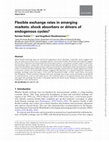
Industrial and Corporate Change
While flexible exchange rates are commonly regarded as shock absorbers, heterodox views suggest t... more While flexible exchange rates are commonly regarded as shock absorbers, heterodox views suggest that they can play a pro-cyclical role in emerging markets. This article provides theoretical and empirical support for this view. Drawing on post-Keynesian and structuralist theories, we propose a simple model in which flexible exchange rates in conjunction with external shocks become endogenous drivers of boom-bust cycles, once financial effects from foreign-currency debt are accounted for. We present empirical evidence for regular cycles in nominal US-dollar exchange rates in several emerging markets that are closely aligned with cycles in economic activity. An econometric analysis suggests the presence of a cyclical interaction mechanism between exchange rates and output, in line with the theoretical model, in Chile, South Africa, and partly the Philippines. Further evidence indicates that such exchange rate cycles cannot exclusively be attributed to external factors, such as commodit...

Review of Keynesian Economics
Since the global financial crisis there has been growing interest in Post-Keynesian macroeconomic... more Since the global financial crisis there has been growing interest in Post-Keynesian macroeconomic theory by political economists. In particular, the recent Growth Models approach in Comparative Political Economy (CPE) draws heavily on Kaleckian macroeconomics of demand regimes. This paper, firstly, traces the disintegration of nineteenth-century political economy and highlights that many streams within heterodox economics are a continuation of the political economy project, as are the sub-fields of CPE and International Political Economy in the social sciences. Secondly, the paper gives an overview of the Growth Models approach and its relation to Post-Keynesian Economics (PKE). It clarifies different strategies of identifying growth models empirically, namely GDP growth decomposition versus analysing growth drivers, and it highlights changes in growth models since the global financial crisis. Finally, it identifies opportunities and challenges that emerge from a continued engagemen...
This paper may be downloaded free of charge from www.postkeynesian.net
Rethinking Economics, 2017
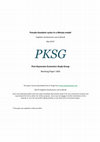
Cambridge Journal of Economics, 2016
Goodwin cycles result from the dynamic interaction between a profit-led demand regime and a reser... more Goodwin cycles result from the dynamic interaction between a profit-led demand regime and a reserve army effect in income distribution. The paper proposes the concept of a pseudo-Goodwin cycle. We define this as a counterclockwise movement in output and wage share space which is not generated by the usual Goodwin mechanism. In particular, it does not depend on a profit-led demand regime. As a demonstration, a simple Minsky model is extended by adding a reserve army distribution adjustment mechanism. The wage share responds positively to output but generates no feedback. In the augmented Minsky model, cycles are generated purely through the interaction between financial fragility and demand. By design, demand is not influenced by changes in income distribution. But the model does exhibit a pseudo-Goodwin cycle in the output-wage share space. This holds true even if a wage-led demand regime is introduced. This demonstrates that the existence of a counterclockwise movement of output and the wage share cannot be regarded as proof of the existence of a Goodwin cycle and a profit-led demand regime.
The Rise of Unemployment in Europe
Cambridge Journal of Economics, 2011
Full bibliographic details must be given when referring to, or quoting from full items including ... more Full bibliographic details must be given when referring to, or quoting from full items including the author's name, the title of the work, publication details where relevant (place, publisher, date), pagination, and for theses or dissertations the awarding institution, the degree type awarded, and the date of the award.
The finance-dominated accumulation regime, income distribution and the
Cambridge Journal of Economics, Nov 12, 2020
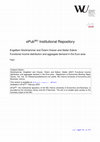
An increase in the wage share has contradictory effects on the subaggregates of aggregate demand.... more An increase in the wage share has contradictory effects on the subaggregates of aggregate demand. Private consumption expenditures ought to increase because wage incomes typically are associated with higher consumption propensities than capital incomes. Investment expenditures ought to be negatively affected because investment will positively depend on profits. Net exports will be negatively affected because an increase in the wage share corresponds to an increase in unit labor costs and thus a loss in competitiveness. Theoretically aggregate demand can therefore be either wage led or profit led depending on how these effects add up. The results will crucially depend on how open the economy is internationally. The paper estimates a Post-Kaleckian macro model incorporating these effects for the Euro area and finds that the Euro area is presently in a wage-led demand regime. Implications for wage policies are discussed.
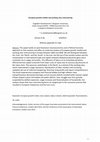
This paper builds on post-Keynesian macroeconomics and a Political Economy approach to class anal... more This paper builds on post-Keynesian macroeconomics and a Political Economy approach to class analysis and offers an empirical analysis of European growth models and working class restructuring in Europe between 2000 and 2008. We will distinguish between the 'East', the 'North', and the 'South'. In the East, the fallout of the socialist system and the incorporation in international trade and capital networks allowed productivity gains and a sustained rise in wages and profits. This affluence of labour at its immediate periphery offered German capital to benefit from lower costs of inputs due to outsourcing elements of the value chain. This pressure contributed, in the North, to a retreat of the working class, which materialized in wage repression, liberalization of labor markets and increasing capitalist opt out of collective bargaining, fostering rising profits and export competitiveness. The South experienced a property and financial bubble and high inflation rates. Competitiveness decreased and large current account deficits resulted while massive capital inflows helped sustain the bubble and public deficits. Class struggle was thus partially suspended by welfare expansion, wage increases and financialisation of households. Our analysis shows that class restructuring forms an integral part in the economic process that resulted in European imbalances and the Euro crisis.
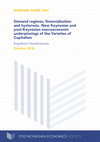
The recent integration of post-Keynesian insights into Comparative Political Economy is an exciti... more The recent integration of post-Keynesian insights into Comparative Political Economy is an exciting development. Post-Keynesian theory differs from neoclassical and Marxist theories in its analysis of the role of income distribution and of finance. It allows for wage-led demand regimes and it regards finance to be endogenously created and a source of instability. The paper contributes to the debate on the integration of demand regimes in the Varieties of Capitalism analyses. It contrasts post-Keynesian theory to the New Keynesian three equation model. It highlights that post-Keynesian theory gives prominence to the role of income distribution and allows for wage-led demand regimes; financial variables play a key role, which gives rise to endogenous instability and financial cycles (Minskyan debt cycles); economic growth is regarded as a path dependent process (with unemployment hysteresis due to wage norms) and is not anchored in a supply side equilibrium. However, PKE has so far mo...

Die Entwicklung hin zur Finanzkrise von 2007 ging in der Mehrzahl der industrialisierten Lander m... more Die Entwicklung hin zur Finanzkrise von 2007 ging in der Mehrzahl der industrialisierten Lander mit drei Trends einher: Einer zunehmend ungleichen Verteilung der Einkommen, sowohl im personellen wie auch im funktionellen Sinne, einem starken Anstieg der Haushaltsverschuldung und eng damit verbunden weit uber der Inflationsrate steigende Immobilienpreise. Der vorliegende Artikel geht der Frage nach wie sich diese Entwicklungen auf das Wirtschaftswachstum im Zeitraum 1980 bis 2013 ausgewirkt haben. Die Untersuchung basiert dabei auf einem Panel-Datensatz der 18 OECD Mitgliedslander umfasst und mit dem eine Konsum-, Investitions-, Export und Importfunktion geschatzt werden. Es zeigt sich, dass qualitativ fur die Gruppe der untersuchten OECD Lander ein lohngetriebenes Nachfragesystem vorliegt und somit eine fallende Lohnquote negative Auswirkungen auf die aggregierte Nachfrage hat. Eine genauere Untersuchung der Effektgrosen kommt jedoch zum Schluss, dass in der Periode 1997-2007, weder...
The paper investigates the relation between effective demand, income distribution and unemploymen... more The paper investigates the relation between effective demand, income distribution and unemployment empirically. Its aim is to evaluate Keynesian, Kaldorian and neoclassical hypotheses about the determination of labor market variables. To do so, a vector autoregression model consisting of capital accumulation, capacity utilization, the profit share, unemployment and the growth of labor productivity is estimated. A general post-Keynesian model following the lines of Kalecki and Kaldor is presented and provides the specification for a structural VAR. The model is estimated for the USA, UK and France.
We use an unobserved components model to estimate hysteresis effects in the EU15. This includes t... more We use an unobserved components model to estimate hysteresis effects in the EU15. This includes the first estimates of their kind for Austria, Belgium, Denmark, Finland, Greece, Ireland, Luxembourg, the Netherlands, Portugal, and Spain, and therefore constitutes a significant addition to the literature. Importantly, we use a similar dataset and estimation strategy to those used by the European Commission to estimate its NAIRU series. The European Commission NAIRUs show sharp increases for many countries over the past decade, often in the absence of major changes to labour market institutions. A simple explanation, supported by our results, is the existence of unemployment hysteresis, which has important policy implications for the EU.
Uploads
Papers by Engelbert Stockhammer